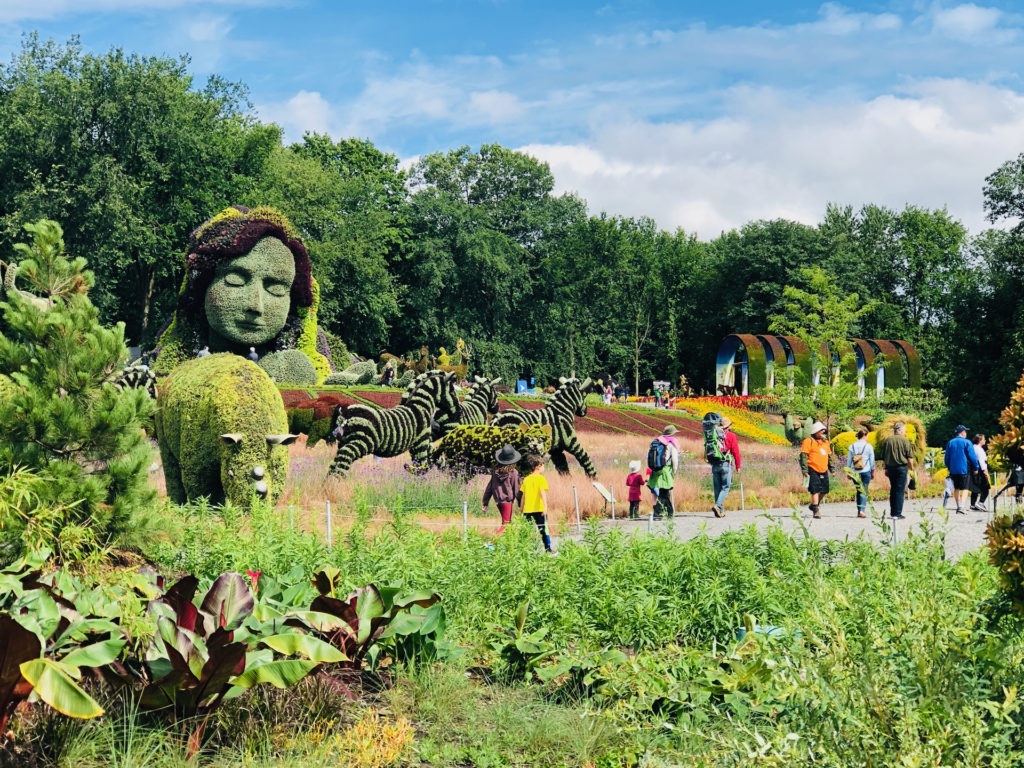
Old Quebec City is humming with a tangible sense of post-pandemic joie de vivre. The capital doesn’t need UNESCO World Heritage Site status to affirm its uniqueness. It’s plain to see once you walk or drive through the old city’s stone gates. “Welcome to Europe!” I tell my kids, who are old enough to know that we’re not actually in Europe, but young enough to believe that we fell through a wormhole and popped up somewhere in medieval France. Especially with the New France Festival in full swing. Costumed re-enactors roam about the narrow cobblestone streets, framed by architecture you won’t find anywhere else in North America.


Roaming the city streets on a hot summer day, encountering random choirs and boisterous buskers in the shadow of the fortress-like Chateau Frontenac, is a bucket list experience unto itself. My book sings the praises of Quebec City in winter, when it hosts the world’s largest winter carnival, the legendary ice hotel, and ice-canoeing. Summer should get its own chapter too. We dodge a thunderstorm noshing macaron in Café La Maison Smith, and then pop onto the Old Quebec Funicular for the short, steep descent into the bustling Rue du Petit-Champlain. Gourmet chocolate, ice-cream, crepes and maple taffy stores share the pedestrian shop-way with galleries, boutiques, souvenir stands and street art. We return to the Dufferin Terrace on the funicular (sparing a 64-metre uphill walk), visiting the New France Festival site for some old-world French immersion. But Canada’s history extends far beyond French or British colonial empires.


Wendake is one of the most accessible and impressive Indigenous tourism offerings in the country. The Huron-Wendat nation numbered in the tens of thousands in the 16th century, successfully and peacefully trading with the French. Within a few short decades, their numbers were decimated by small-pox, disease and war with the neighbouring Iroquois Confederacy, forcing survivors to scatter in search of a new home. Eventually some settled in an area that become Wendake, an urban reserve encased within Quebec City. Today, the nation has rebounded spectacularly as one of the most affluent Indigenous communities in the country, driven by remarkable tourism initiatives, and anchored by a boutique hotel / living museum called the Hôtel-Musée Premières Nations. The on-site reconstructed long house is a must-see, and the menu in the award-winning on-site Restaurant La Traite is a must-taste. Forgoing old world spices and salt, Chef Marc de Passorio visited Indigenous communities throughout Quebec to craft memorable dishes using native herbs, plants and flavours. A new offering is the Onhwa’ Lumina, a 1.2km illuminated pathway through forest immersed in light, sound and jaw-dropping projections. Montreal-based Moment Factory has created similar Lumina experiences around the country, from Ottawa’s Parliament Hill to Whistler. This installation revels in Wendake’s rich history, resulting in a forward-thinking innovation guaranteed to attract visitors for many years to come.

Culture, history, and the wonders of nature too. Quebec City hosted Mosaiculture’s Once Upon a Time exhibition, a mind-boggling collision of horticulture and art hosted in the city’s Parc du Bois- de-Coulonge. Artists let their green imaginations run amok, building giant living plant works in the shape of animals like elephants, giraffe, moose, hippo and hyena. The centre piece is a stunning Mother Earth, full of colour, life and wonder. I caught a Mosaiculture exhibition several years ago in Montreal and it was unforgettable too. There’s talk the exhibition might return to Quebec City next year, although wherever it pops up (the non-profit organization has produced over 100 works in 20 countries), you’ll want to add it to your bucket list.


Quebec City also has one of the best aquariums in the country, a hands-on affair to delight younger kids with its diverse range of marine wonders. The illuminated jelly-fish room is sensational, as is the sting ray touch pool where the kids can get their hands (and clothes) wet playing with friendly stingray pups. A polar bear and walrus were particularly active in their pools, and the red-bellied piranhas reliably menacing. Stitching it altogether were exhibits about the human impact on our oceans, and the devastating impact of overfishing and pollution. Say what you want about aquariums, but both my kids left the Aquarium de Québec with more knowledge and respect for our oceans, rivers and aquatic eco-systems. They were also delightfully drenched from sting ray splashes. I suggest you arrive early as the aquarium does get very busy.


Finally, we couldn’t complete our summer family visit to Quebec City without a day or two swooping and sliding in Saint-Gabriel-de-Valcartier. Hosting the ice hotel in winter, the village is home to the Hotel Valcartier water park resort in summer, a huge family draw with its massive outdoor and indoor water parks. There’s slides and wave pools for all ages, various places to eat, an arcade if the weather isn’t great, and the large indoor Bora Park waterslides to soak up the evenings as well. The rooms were great, seemingly every teenager within fifty miles was employed as a red-shirted lifeguard, and my kids were absolutely delighted.
Two nights, three days, and we barely touched the surface. Whatever the season, Quebec City once again proved itself to be like no other city in North America.
